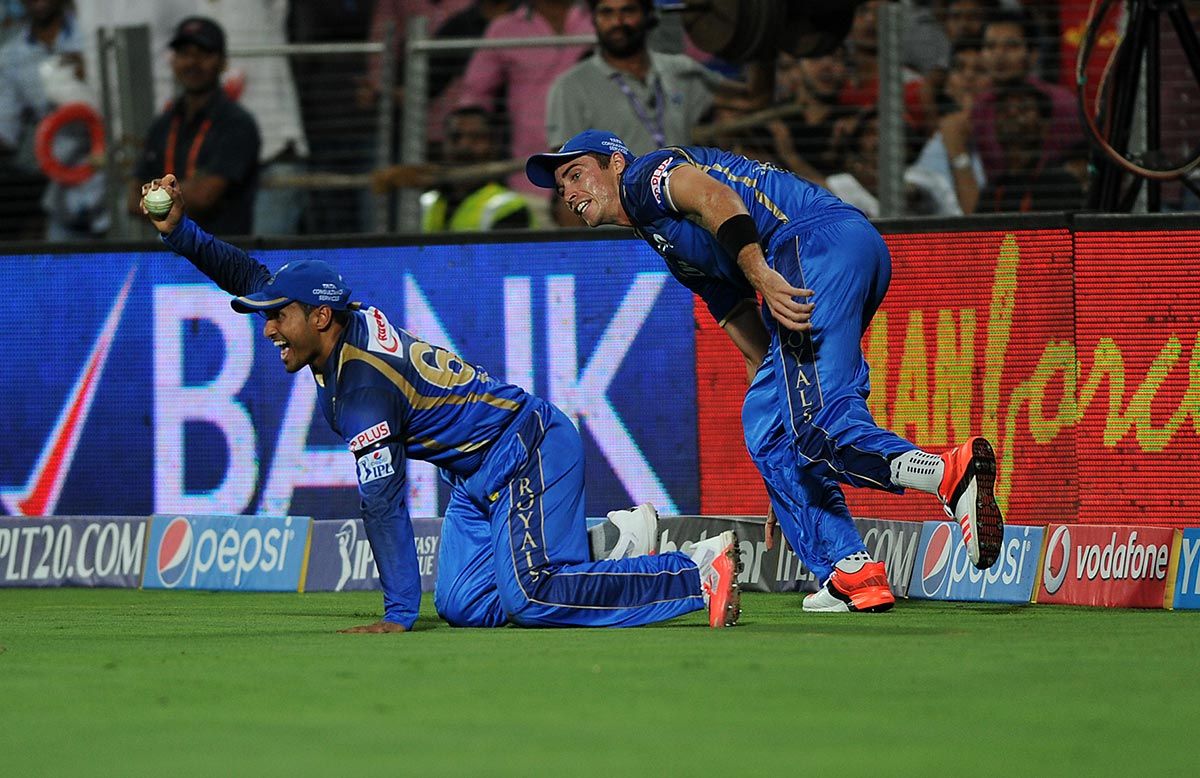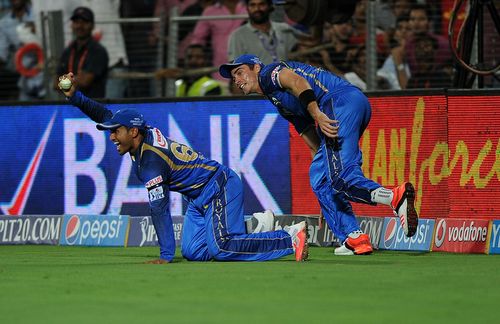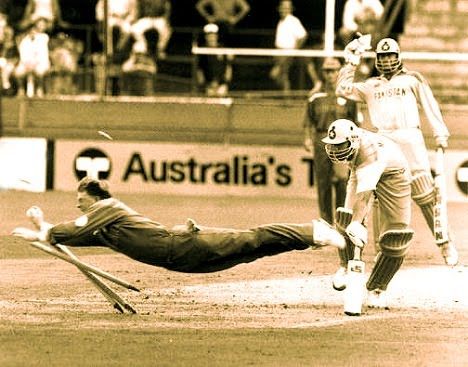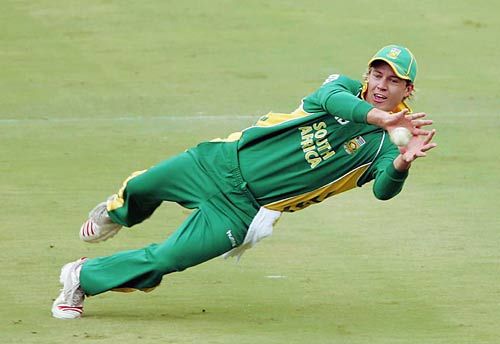
How fielding in modern-day cricket has gone beyond the bounds of possibility
“The limits of the possible can only be defined by going beyond them into the impossible” - Arthur C. Clarke
Tim Southee had gone beyond the realms of possibility when he saved a certain six by taking one of the better catches of the tournament near the boundary rope. And it became one of the best in the IPL history when Karun Nair with his quick reflexes coupled him to complete the sensational catch, sending the Punjab skipper George Bailey back to the pavilion.
Also read: Cricket Fielding Positions:The origins of field placement names in cricket
A couple of days later, David Warner took a one-handed blinder to dismiss RCB’s Mandeep Singh for a golden duck. Suresh Raina’s electrifying fielding effort in the penultimate ball of the CSK vs DD match turned out to be crucial for CSK’s victory over Delhi Daredevils. Mayank Agarwal’s brilliant save in the near the boundary line saved not only 6 runs but also the match for DD.
Well, the bars of the ‘impossible’ has to be elevated. Athleticism has set new standards in the fielding department.
But there had been a time when fielders waited for ‘edges’ and mistimed shots to carry straight to them, as no one dared to put hands to a ball that was fired like a bullet from the bat. There was a time when players pointed fingers at each other as they hesitated to go beyond their fielding positions to stop the ball. Anything high near the boundaries was allowed to fall behind the ropes. Cricket had been mainly about batting and bowling.
But everything dramatically changed by the start of 1992 world cup. A young man in his early 20’s showed the world how deadly fielding could be in cricket. It was the beginning of a new era.
The incredible Jonty
It all started with a flying leap. Pakistan was playing against South Africa in a 1992 world cup match. Inzamam-ul-Haq tried to steal a run from a ball that went to the point region after hitting his pads. But he got stuck in the middle when he saw the point fielder dashing towards the striker’s end after fetching the ball.
For a moment, Inzi got flabbergasted by watching the agility of the young man, and that second of pause had been more than enough to make him short of the crease, as the dude, with a full-length dive, crashed onto the stumps at incredible speed. The world witnessed something which has never happened before in international cricket. A legend was born and the rest is history.
It wasn’t a bird. It wasn’t a plane. It was Jonathan Neil Rhodes.
Yes, it was Jonty Rhodes – The man with wings who took fielding to another dimension. The man who ruled the backward point area like a lion in a forest. The man who terrorized batsmen with his destructive kinetic energy and impeccable accuracy. He was a short guy - just 5 feet 4 inches tall, but it seemed like he was as tall and wide as the Great Wall of China.
He stunned even the greatest batsmen with his mind-boggling reflexes and astonishing hand to eye co-ordination. Fielding was redefined with athleticism and acrobatics.
Even though he made it look easy by his phenomenal fielding technique, fetching a ball (weighing about 160g) moving at high velocities through the air was always painful. But it was even more painful to see Jonty Rhodes hiding his fingers while celebrating after a spectacular effort. But he never shied away. His confidence and commitment had been the key factor in his way of becoming the greatest fielder ever in international cricket. He made the impossible possible.
Catches win matches
Catches win matches. Herschelle Gibbs knows this well as he dropped the crucial catch of Steve Waugh in the 1992 world cup which eventually led to the exit of South Africa from the world cup. The number of catches dropped by Pakistan players in the 2015 world cup would have even given a heart attack to Jonty Rhodes. No wonder they were kicked out from the tournament by Australia in the quarter final.
Because Jonty demonstrated to the world how a terrific fielding effort can change the complexion of the game. A good catch is not only a game changer but also a confidence booster for the entire team. Nowadays, it’s imperative that along with good bowling and batting, fielding should also be top class in order to be a world-class team.
The legacy of Jonty Rhodes
Jonty was the trigger and the example. He took the initiative for the much-needed change in the fielding department. He inspired many and as a result world got so many great fielders. Herschelle Gibbs became the successor of Jonty Rhodes. Ricky Ponting and Mark Waugh made Australia one of the greatest fielding sides in the world. Yuvraj Singh and Mohammed Kaif together inspired many aspiring Indian cricketers.
Brendon McCullum, AB de Villiers, Faf du Plessis, David Warner, Suresh Raina have carried the legacy of Jonty and has raised the bar a bit more than their ancestors. Nothing seems impossible for these people with the safest pair of hands in the cricketing world. The World is now blessed with so many Jonty Rhodes. Everyone knows how to take a high catch near the boundary line without touching the ropes. Fielding has got revolutionized.
Some may argue that no one can match the brilliance of the little superman of South Africa in the field, but I’m sure that players like De Villiers and McCullum are capable of taking fielding to much higher levels.
The cricketing world will always be grateful to Jonty for his contribution to the art of fielding.


